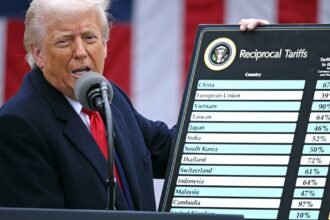
The time period will be counted from the date of receipt of the funds after adjusting for forward commitments
Exporters can keep the foreign exchange proceed in a Foreign Currency Account at International Financial Services Centre (IFSC) for a period of three months. However, for accounts opened in any other jurisdiction, the time limit to use the proceed remains one month.
Reserve Bank of India has amended Foreign Exchange Management (Foreign Currency Accounts by a Person Resident in India) Regulations, 2015 to facilitate the change. Experts said that this will be big help to India‘s high-value export industries, particularly the gems and jewellery sector.
The notification read: ”Funds in this account may be utilised by the exporter for paying for its imports into India or repatriated into India within a period not exceeding the end of three months in case of accounts maintained with banks in an International Financial Services Centre; or next month for all other jurisdictions.” The time period will be counted from the date of receipt of the funds after adjusting for forward commitments.
Moksh Kalyanram Abhiramula, Managing Partner of La Mintage Legal LLP said after this, exporters can conveniently open and operate foreign currency accounts abroad or at IFSCs for export proceeds, with defined repatriation timelines, enhancing operational flexibility and global competitiveness. “Moving ahead, India should focus on expanding regulatory clarity for evolving trade practices, strengthening monitoring mechanisms to prevent misuse, and promoting awareness among exporters about these compliance opportunities for maximising benefits under FEMA’s progressive regime,” he said.
Exporters said that with this a long standing issue has been resolved. Siddharth Sipani, CFO at Skygold & Diamonds said that the earlier regulatory structure, including the existing Exchange Earners’ Foreign Currency (EEFC) account scheme, mandated quick conversion of our foreign currency earnings, typically by end of next month. “This forced us into a cycle of frequent and often unoptimised conversions to the rupee , resulting in significant operational costs, increased currency fluctuation risk, and considerable treasury workload,” he said.
With the help of new provisions, gems and jewellery exporters can now better align their dollar receivables from finished jewellery exports with dollar payables for raw material imports, substantially reducing the need for costly and risky spot currency conversions. A three-month horizon provides the necessary flexibility to implement better hedging strategies, shielding us from volatile exchange rate movements. “By lessening the frequency of conversions, we directly cut down on transaction charges and compliance overhead,” Sipani said.
However, experts also have some word of caution. Vishal Gehrana, Partner Designate at Karanjawala & Co feels those using accounts outside IFSCs will need to ensure tighter cash flow management to meet the shorter, one-month repatriation timeline. The change also reinforces the role of IFSCs as India’s own international finance centres, providing an alternative to holding funds abroad.
At the same time, compliance obligations remain stringent. “Exporters must ensure that these accounts are used only for export-related receipts, that all transactions are properly documented, and that the funds can be linked to genuine trade dealings. They must also maintain full KYC records and audit trails. Any misuse or delay beyond the permitted timeline can attract regulatory action,” he advised.
Published on October 10, 2025





















